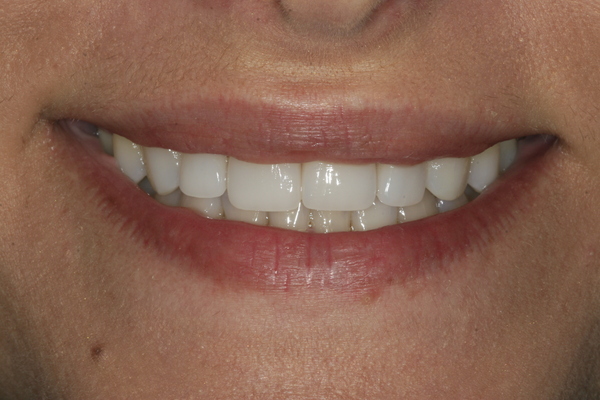Types of Teeth Stains
Understand the Different Types of Teeth Stains and How to Remove Them
Many of us want a bright, radiant smile, but tooth discoloration and teeth stains can often get in the way. From daily habits to the natural aging process, discoloration happens to everyone. Understanding the different types of teeth stains—and knowing how to remove or prevent them—can be key to keeping your smile looking its best.
As the only accredited Chula Vista, CA cosmetic dentist, Dr. Nick Addario helps patients in Chula Vista, San Diego, Bonita, National City and the nearby areas, understand the most common types of stains, their causes, and effective ways to treat them to enjoy a whiter, more confident smile. To learn more, contact Smile Expert today by calling (619) 626-2004.

What Causes Teeth Stains?
Teeth stains generally fall into three categories: extrinsic, intrinsic, and age-related. Poor dental hygiene is another significant factor that can lead to teeth stains. Each type of stain develops for different reasons, which means each requires a unique approach for removal.
Extrinsic Stains: Surface-Level Stains
Extrinsic stains affect the outer layer of the tooth (the enamel) and are often caused by foods and drinks that contain color pigments. Common sources include:
- Coffee, tea, and red wine: These beverages have intense color pigments that adhere to enamel.
- Tobacco products: Both cigarettes and chewing tobacco can stain teeth, leaving a yellow or brown tint.
- Sugary and acidic foods: These can make enamel more vulnerable to staining by weakening it.
Treatment Options: Since extrinsic stains are on the tooth’s surface, they’re usually the easiest to remove. Professional dental cleanings and at-home whitening treatments, like whitening toothpaste or strips, can often help. For stubborn stains, professional whitening at Smile Expert in Chula Vista can offer a brighter, more dramatic result.
Intrinsic Stains: Below the Surface
Intrinsic teeth stains occur within the inner layer of the tooth, called dentin, making them harder to treat. This type of stain can result from:
- Medications: Certain antibiotics taken during childhood, like tetracycline, can cause intrinsic staining.
- Trauma or injury: Impact to a tooth can cause it to darken over time.
- Excess fluoride: High fluoride levels can lead to white spots or discoloration known as fluorosis.
Treatment Options: Since intrinsic stains are deep within the tooth, at-home whitening products may not be effective. However, professional whitening, veneers, or bonding treatments can help restore a more even color to your smile. At Smile Expert, our Chula Vista team offers cosmetic solutions to cover or reduce the appearance of intrinsic stains.
Age-Related Stains: The Natural Aging Process
As we age, our enamel thins, allowing the naturally yellow dentin underneath to show through, leading to discolored teeth over time. This combination of intrinsic and extrinsic staining can lead to a more visibly discolored smile over time.
Treatment Options: Professional whitening treatments are often effective for age-related staining. If the discoloration is significant, options like veneers or dental bonding can also help create a brighter smile. Consulting with your dentist in Chula Vista can help determine the best approach for your needs.
Teeth Whitening Options
When it comes to teeth whitening, there are several options available, each suited to different types and severities of tooth stains. Professional teeth whitening treatments, such as Zoom teeth whitening, are highly effective at removing extrinsic stains and brightening your smile. These treatments are performed in a dental office and can deliver dramatic results in a short amount of time.
For those looking for at-home solutions, whitening toothpaste and gel kits can help tackle surface stains. These products are convenient and can gradually improve the appearance of your teeth with consistent use. However, if you have intrinsic stains, which are deeper within the tooth, more advanced treatments like bleaching or laser whitening may be necessary. Consulting with your dentist is essential to determine the best teeth whitening option for your specific needs and to ensure safe and effective results.
Seeing a Dentist for Teeth Stains
If you’re dealing with teeth stains, seeing a dentist is a necessary step in determining the cause and severity of the discoloration. A professional evaluation can help identify whether the stains are extrinsic, intrinsic, or age-related, and guide you towards the most effective treatment options.
In some cases, teeth stains may indicate underlying dental issues such as tooth decay or gum disease. Addressing these problems is essential for maintaining overall oral health. Your dentist can also offer professional teeth whitening treatments that are more effective than over-the-counter products. Additionally, they can provide personalized advice on how to prevent future stains and maintain a brighter, healthier smile. Regular dental check-ups and cleanings are key to keeping your teeth in top condition.
Preventing Future Stains
Preventing teeth stain starts with a few simple habits:
- Maintain daily brushing and flossing: Removing food particles and plaque can reduce staining.
- Limit stain-causing foods and drinks: Try using a straw for dark beverages and rinse with water after consuming stain-causing foods.
- Schedule regular cleanings and check-ups: Professional cleanings can keep stains at bay and ensure your oral health stays on track.
Frequently Asked Questions
Can teeth stains be prevented?
Can over-the-counter whitening products remove extrinsic stains?
Can everyone undergo teeth whitening treatment?
Enjoy a Brighter Smile at Smile Expert
Whether caused by diet, lifestyle, or aging, teeth stains are common but treatable. By identifying the type of stain, you can take steps to reduce or remove discoloration. Our team at Smile Expert is here to help you achieve a healthier, more confident smile through professional cleaning, whitening, and cosmetic treatments. Contact our Chula Vista, CA dental office by calling (619) 626-2004 to learn more about the best stain removal options for you!